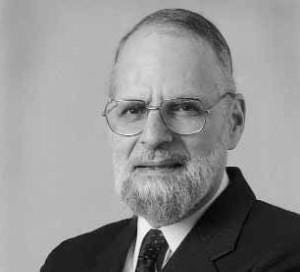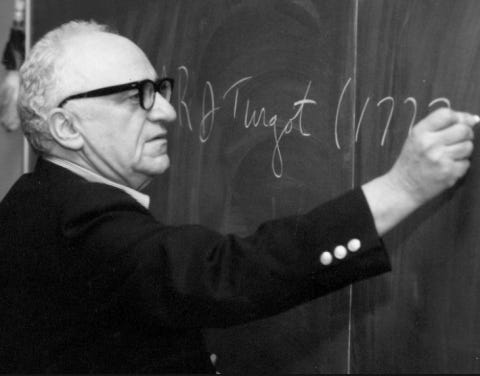Monopoly: Fact or Fiction?
A look inside Israel Kirzner's and Murray Rothbard's thoughts on Monopoly theory.
By J.W. Rich
The presence of a monopoly is often seen as one of the gravest and most concerning manifestations of market failure. In the Neoclassical tradition, the existence of a monopolist in a particular market is generally seen as sufficient justification for government intervention in that market to put a halt to the monopolist’s’ exploitative ways. The Austrian tradition, however, has historically remained skeptical of this alleged problem of monopoly. Two of the most prolific Austrian theorists, Murray Rothbard and Israel Kirzner, have themselves offered objections to the Neoclassical perception of monopoly. While they both attack the traditional conception of monopoly in different ways, they are both ultimately compatible and offer a alternative perspective on this important economic issue.
First, we should briefly discuss the Neoclassical monopoly model, in order to better understand both Kirzner and Rothbard’s critiques. The standard classroom monopoly model posits a market that has only one producer of a good. Because of his position of being the sole producer of a good, he is able to raise the price of the good to a higher “monopoly price” and reap for himself greater profits than he would have achieved on the competitive market. In technical terms, instead of producing at the socially optimal point where Demand = Marginal Cost, he raises his prices to the point where Marginal Revenue = Marginal Cost. As a result of this dastardly trick, his profits greatly increase while a deadweight loss is created, thus reducing aggregate social welfare. The traditional prescription to the monopoly problem is for the government to intervene and force the monopolist to behave by instituting price ceilings, by nationalizing or municipalizing the monopolist in the case of a “natural monopoly”, or by smashing up the monopolist into smaller companies and creating a competitive market from its remnants.
What do the Austrians have to say in response to the picture of monopoly presented above? In his “Competition and Entrepreneurship”, Kirzner challenges the idea that a sole producer of a good in a market is inherently a cause for concern.
“Monopoly … in a market free of government obstacles to entry, means for us the position of a producer whose exclusive control over necessary inputs blocks competitive entry into the production of his product. Monopoly thus does not refer to the position of a producer who, without any control over resources, happens to be the only producer of a particular product. This producer is fully subject to the competitive market process, since other entrepreneurs are entirely free to compete with him” (Kirzner 1973, p. 103)
Kirzner argues that the Neoclassical view of monopoly begs the question: Why is a single producer of a good necessarily bad? After all, couldn’t it be that the monopolist in the Neoclassical model was simply the more efficient than every other producer on the market to the degree that he drove out all competition? If this was the case, then why would we ever want the government to break up his firm or force him to operate his business differently? His cost-effectiveness and productivity provide a clear benefit to the consumer! If anything, he should be telling the government how to better run its operations! Breaking up such a company would surely be detrimental to the consumer and their preferences of the products they wish to consume.
Kirzner’s point is that the Neoclassical concerns over a monopolist acting in a socially inefficient manner is only a problem if he doesn’t face the fear of other competitors entering the market. If he doesn’t have exclusive ownership of all the necessary inputs to a product, then he can’t possibly raise his prices arbitrarily, as entrepreneurs would then enter into the market to compete with him. Unless he has a monopoly over the inputs of a good, then he is in no better position to achieve a monopoly price than any other producer of any other good on any other market.
Rothbard, however, takes a much harder line against the Neoclassical model of monopoly than Kirzner. In his “Man, Economy, and State”, Rothbard calls into question the entire idea of a “monopoly price” distinguishable from a competitive market price:
“Yet, if we analyze the matter closely, it becomes evident that the entire contrast is an illusion. In the market, there is no discernible, identifiable competitive price, and therefore there is no way of distinguishing, even conceptually, any given price as a “monopoly price.” The alleged ‘competitive price’ can be identified neither by the producer himself nor by the disinterested observer.” (MES, pg. 688)
Rothbard goes on to add:
“The critical question is this: Is the market price, 0P, a ‘competitive price’ or a ‘monopoly price’? The answer is that there is no way of knowing. Contrary to the assumptions of the theory, there is no “competitive price” which is clearly established somewhere, and which we may compare 0P with.” (MES, pg. 689)
Because there is no method of distinction between a monopoly price and a competitive price, the entire notion is functionally worthless. We have no method of knowing whether any given price is a monopoly price or a competitive price or anything in between. However, on the free market, there is only one price: the market price. The entire notion of a monopoly price as contrasted with a competitive price is ill-defined, and as such, should be discarded altogether. It is of no practical use whatsoever in our economic analysis.
We can see that these two Austrian approaches to monopoly take very different perspectives on the issue. Even so, the two are perfectly compatible and reinforce one another. This is because both of the theories attack the Neoclassical conception one different grounds. Kirzner’s counter to Neoclassical monopoly theory points out that even on the Neoclassical model’s own ground, their fears over a monopoly price are unwarranted. There is no need for worry over a monopoly in a market unless that sole producer also has the exclusive control over the necessary inputs to create the good that he sells. Absent this monopoly over productive factors, any monopoly of the market is ultimately no cause for concern.
Where Kirzner dismisses the concerns of the Neoclassical over the monopolist and their monopoly price, Rothbard undercuts the concept altogether. There is no such definable concept as a monopoly price to contrast with a competitive price, as on the market there is only the market price. As such, the entire Neoclassical picture of monopoly is incoherent from the start. The combination of these two Austrian viewpoints results in a view of the Neoclassical model of monopoly as incoherent and functionally useless: the model’s components are not clearly defined and cannot be applied to the real world, and even if it could be, their fears over monopoly are not even necessarily present in their formulation. The Neoclassical model is internally nonsensical, but even in the case that we could make sense of it, their concerns over a monopoly price are baseless absent exclusive control over the needed inputs for production. Consequently, the entire model should be discarded and left behind with the countless other economic fallacies of the past.
To give some consolation, the Neoclassical theory of monopoly is perhaps not completely useless. It demonstrates to us clearly the impossibility of differentiating among the exchanges of the market economy. On the unhampered market, there is only exchange and prices, supply and demand. We cannot make a distinction between the “true nature” of one another, monopoly or otherwise. Given that all are free to trade as they please, there is only the market and its unending process of progressing and moving ever forward.
Click here for the Austrian Economics Discord Server.
Click here for the Austrian Economics Discord YouTube Channel.





